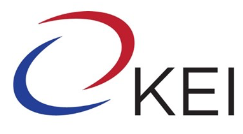The Peninsula
Memory Serves: How Tariffs and Chips Anchor U.S.-Korea Economic Strategy
Published September 23, 2025
Author: Emily Benson
Category: Technology, Economic Security, US-Korea alliance

The United States and South Korea share an undeniably formidable relationship. According to the United States Trade Representative (USTR), bilateral goods and services trade reached USD 239.6 billion in 2024, an 8 percent increase from the previous year. While policy changes in the United States have brought new complexities to the relationship, recognizing the cohesiveness of the U.S. agenda can make it easier to identify areas of mutual interest.
On trade, the Trump administration is using a mix of tools, primarily centered around tariffs, to induce onshoring and investment into the United States. Motivations are multifold. The administration claims—and has since its first term—that offshoring has hollowed out manufacturing capabilities, leading to a fundamental shift in the U.S. economy from an economy that produces “real things” to a service-based economy. This transition, according to the administration, invites significant risk because it coincides with a weakened Defense Industrial Base (DIB) that has not kept up with cutting-edge innovation. Therefore, to reinvigorate the DIB and provide better jobs for more Americans, it is a strategic imperative to onshore production.
Another goal is to expand tariff revenue, which has grown from USD 78 billion to USD 152 billion this year, making tariffs a sticky policy tool. In August 2025, Treasury Secretary Scott Bessent argued that the status quo with China appears to be working, noting that tariffs on Chinese products account for a significant portion of the United States’ tariff-related revenue. “If it’s not broke, don’t fix it,” he .
One consequential feature of the tariffs is that the U.S. government is shifting the cost burden of reshoring to the private sector. Under the Biden administration, the White House and Congress used subsidies to soften costs associated with onshoring. Now, companies will be on the hook for onshoring costs. (Stellantis, for instance has warned of a this year). To the extent that companies pass on tariffs to consumers, which is already occurring in certain industries, tariffs will also serve as a consumption tax.
Technology Policy
A new era of digital diplomacy has begun. In July 2025, the White House unveiled its , which consists of three pillars: infrastructure buildout, innovation through deregulation, and foreign affairs and security. The most geopolitically significant element of the action plan is a fundamental shift in U.S. government thinking on the diffusion of U.S.-origin technology. A core objective of the AI Action Plan is to stack parts of the AI supply chain into a bundle that can then be more easily exported as one product.
The United States has faced fierce competition from foreign companies like Huawei, which integrate hardware and software into a single package and at significantly lower prices. The administration is hoping that a “consortium approach” in which companies work more closely together would facilitate increased exports of foundational AI components, ranging from advanced semiconductors to cloud services.
This indicates that the Trump administration believes promoting exports of a “full stack” U.S. AI solution will help the U.S. project geopolitical power, solidify the market leadership of its private sector firms, and bolster long-term national security objectives. This shift in emphasis aligns with the administration’s rescission of the Biden-era AI Diffusion Rule and its subsequent deals to authorize shipments of large volumes of powerful AI chips to the Middle East.
The break with the Biden administration, while notable, does not mean the United States will allow unfettered exports of AI technology. While appearing to soften its stance on AI exports that lack clear linkages with military end-use in foreign adversary nations, the administration will likely seek additional export control concessions from allies.
While ambitious, this plan may soon confront practical realities. First, the U.S. government will continue to struggle to convince allies and partners to align on export controls if it does not declassify or share underlying justifications for those controls. Foreign governments would be much more convincing to their own private sectors if they could clearly explain the need to enforce controls.
Second, the United States needs to ensure it is building an operating system that foreign partners want to build on. With expressed interest in geofencing, the U.S. government and private sector need to reassure allies about the long-term reliability of U.S. tech. Third, the United States will need to clarify the role of foreign companies in a consortium approach.
U.S.-Korea Collaboration
Korea remains an indispensable partner for the Trump administration as it seeks to both strengthen alliances and counter China’s technological rise. Exponential growth in data center demand, driven by AI and cloud computing, creates a strategic avenue for bilateral cooperation. Korea’s advanced manufacturing capabilities in memory, storage, and networking components make it an ideal partner for building resilient data center supply chains.
Korea’s dominance in high bandwidth memory (HBM) chips presents an opportunity and strategic imperative for cooperation with the United States. SK Hynix commands approximately 55 percent of the global HBM market, while Samsung accounts for 40 percent, meaning these firms maintain outsized influence on the memory infrastructure that powers AI and high-performance computing. Korean firms can capitalize on the crowding-in of investments both downstream and upstream through additional investments in the United States, thus playing an integral role in the U.S. bid to export foundational technology abroad.
The recent U.S. expansion of semiconductor export controls to include HBM chips highlights the need for closer bilateral coordination of export controls. Given the fluid nature of U.S.-China trade talks, it remains unlikely that the United States would ask for major concessions until a broader trade and investment deal is reached. But a deteriorating diplomatic environment between the two could place Korea awkwardly in the middle, particularly if technology continues to dominate discussions.
With its technology and trade agenda, the United States is attempting to achieve diffusion at scale to maintain dominance of the global AI tech stack. At the same time, it is willing to work internationally to sell U.S. products—but under U.S. terms and conditions. In doing so, the United States is exporting its national security agenda and the geopolitical philosophy that underpins it.
The U.S.-Korea technology partnership has the potential to define the next decade of global innovation. By focusing on areas of mutual strength—HBM development, coordinated export policies, and secure supply chains—both nations can maintain their technological leadership while preserving the democratic values that underpin their alliance.
Emily Benson is Head of Strategy at Minerva Technology Futures. She previously served as a Senior Advisor at the Commerce Department and ran the CSIS Project on Trade and Technology. Views presented here are the author’s alone.
Feature image from Shutterstock.
KEI is registered under the FARA as an agent of the Korea Institute for International Economic Policy, a public corporation established by the government of the Republic of Korea. Additional information is available at the Department of Justice, Washington, D.C.
